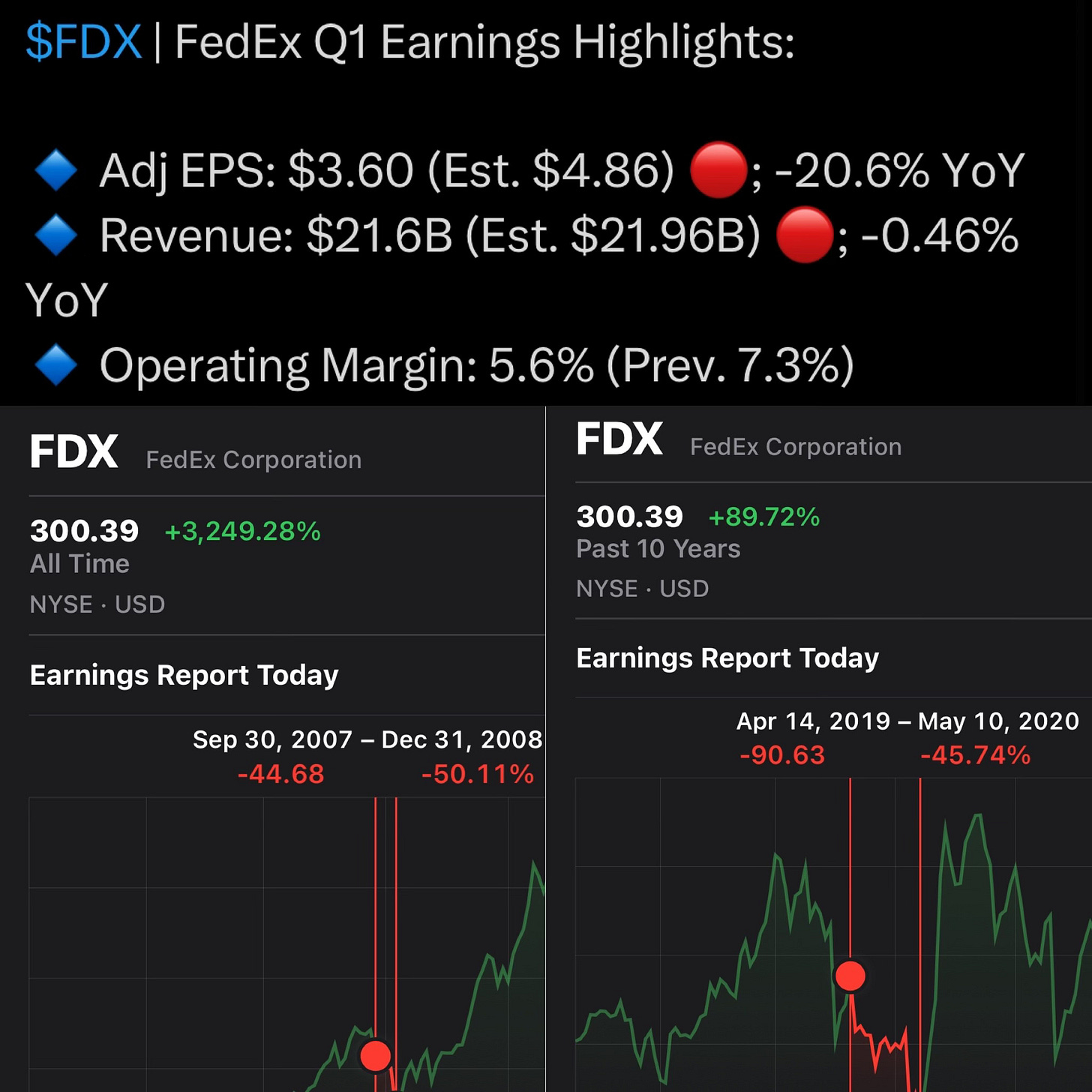As the Federal Reserve delivered its 50 basis point rate cut, the stock market rallied, driven by a wave of euphoria that seems, yet again, disconnected from reality. Investors are closing their eyes to the stark economic data, preferring to bask in the fleeting glow of rising asset prices. But just like in Kansas’s iconic song “Dust in the Wind”, “all their dreams of riches may pass before their eyes” as the fragile economy beneath the surface crumbles.
The haunting refrain from Kansas’ “Dust in the Wind”—“Same old song, just a drop of water in an endless sea”—serves as a perfect metaphor for the cyclical and often fleeting nature of monetary policy’s impact on the markets. Time and again, the Federal Reserve’s rate cuts provide a temporary lift for asset prices, but their long-term effectiveness in addressing deeper economic structural issues remains debatable.
Historical Patterns: That Everyone Refuse to See
A closer look at 24 years of historical data reveals a sobering truth:
• 2001 Rate Cut: The Fed slashed rates by 50 basis points, creating a 9-month delay before the reality set in. Markets dropped by -30%, fraud in the dot com bubble was exposed with the collapse of Enron and the NBER officially declared a recession after the fall. Unemployment surged the following year in 2002, revealing the cracks in an economy propped up by easy money. For more on Enron check out the video below.
• September 2007 Rate Cut: Once again, the Fed reduced rates by 50 basis points, but the reprieve was short-lived. By September 2008, stocks plummeted by -50%, marking the start of the Global Financial Crisis with Lehman Brothers saying they were running a ponzi scheme with Repo market actions (Repo 105). Despite rates eventually dropping to 0% in 2008, the economic damage was profound, with unemployment continuing to climb through 2009. For more information on Lehman Brothers Repo 105 Ponzi scheme, watch the video below.
The significance of highlighting the bursting of bubbles (fraud) of Enron and Lehman Brothers lies in the fact that while stocks may surge on the initial excitement of rate cuts, there was rampant fraud behind the scenes that the public was unaware of. As Kansas poignantly sings, these schemes eventually “crumble to the ground.” Just like in those historic collapses, today’s market euphoria masks deeper issues that will inevitably be exposed when the facade of liquidity fades. The cracks are already showing up with the likes of Supermicro, with delaying and missing their deadline to report their 10k. This is significant due to the fact it was the top performing AI stock and has massive connections and links to Nvidia. Reminding us how fragile this illusion of prosperity truly is.
One thing is for certain, you cannot trust what Wall Street says or puts out. In 2007 Goldman Sachs was shorting the Mortgage Back securities and Collateral Debt Obligations (CDOs) at the same time selling those same securities to investors. In 2007 Goldman had Bear Stearns as its top 5 rank security before it collapsed just a few months later in early 2008.
Market Behavior: Frailty Beneath the Surface
These historical episodes illustrate that the initial euphoria following rate cuts often masks underlying economic vulnerabilities. In both instances, it wasn’t until the market nosedived that fraud, overleveraging, and extreme overvaluation were fully exposed. Rate cuts, while initially soothing, often act as mere band-aids on deeper economic wounds—delaying, but not preventing, downturns.
Investor Psychology: The Fallacy of Endless Gains
The cycle of rate cuts followed by market rallies can create a dangerous complacency among investors, fostering the illusion that stocks will always rise. But history consistently shows otherwise. Much like Kansas warns in “Dust in the Wind,”—“Now don’t hang on, nothing lasts forever but the earth and sky.”—the fleeting nature of these gains is inevitable. As rate cuts wear off and the economic realities set in, the dust begins to settle, revealing the frailty beneath the temporary highs.
Market Rallies, Same Old Song
The Federal Reserve’s actions, while powerful in the short term, often do little to address the underlying imbalances in the economy. Once the dust clears, we are left with the sobering truth: just as the wind cannot prevent dust from settling, monetary policy cannot prevent the eventual reckoning in the market.
Take FedEx, for example, a company long considered an economic bellwether. Its recent earnings report was nothing short of disastrous—profits of $892 million, a shocking -24% below expectations. The company’s stock plummeted nearly -15%, and CEO Raj Subramaniam warned analysts that the current economic weakness is unmistakable. “The magnitude of the Fed rate cuts yesterday signals the weakness of the current environment,” Subramaniam said, echoing the sentiment we heard in September 2007 when the Fed cut rates by 50 basis points, only for the financial system to unravel soon after. Then, as now, we were told a soft landing was coming, but in the end, all that remained was wreckage.
The lyrics of “Dust in the Wind” could easily serve as a warning to those celebrating the temporary market highs: “All we do crumbles to the ground, though we refuse to see.” Investors, driven by the belief that cheap money from the Fed will continue to prop up stocks, are ignoring the underlying economic decay. The personal savings rate for Americans is at a near-record low of 2.9%.
While personal debt and consumer delinquencies are on the rise. Yet, blinded by market rallies, investors refuse to see that this surge in asset prices is built on a crumbling foundation.
Keep reading with a 7-day free trial
Subscribe to The Coastal Journal to keep reading this post and get 7 days of free access to the full post archives.







